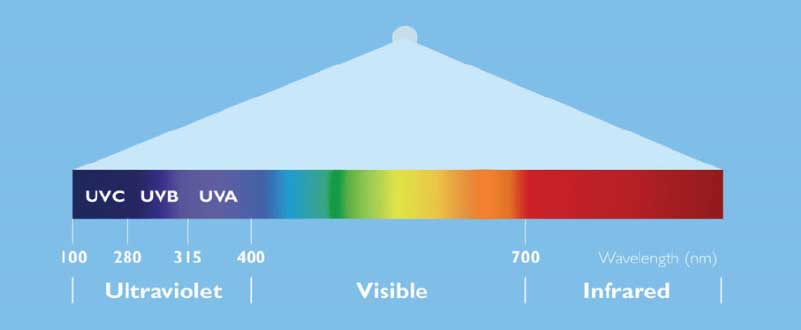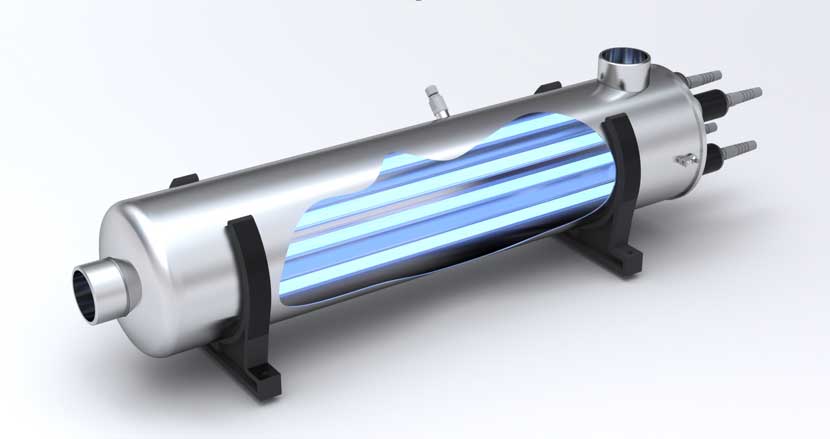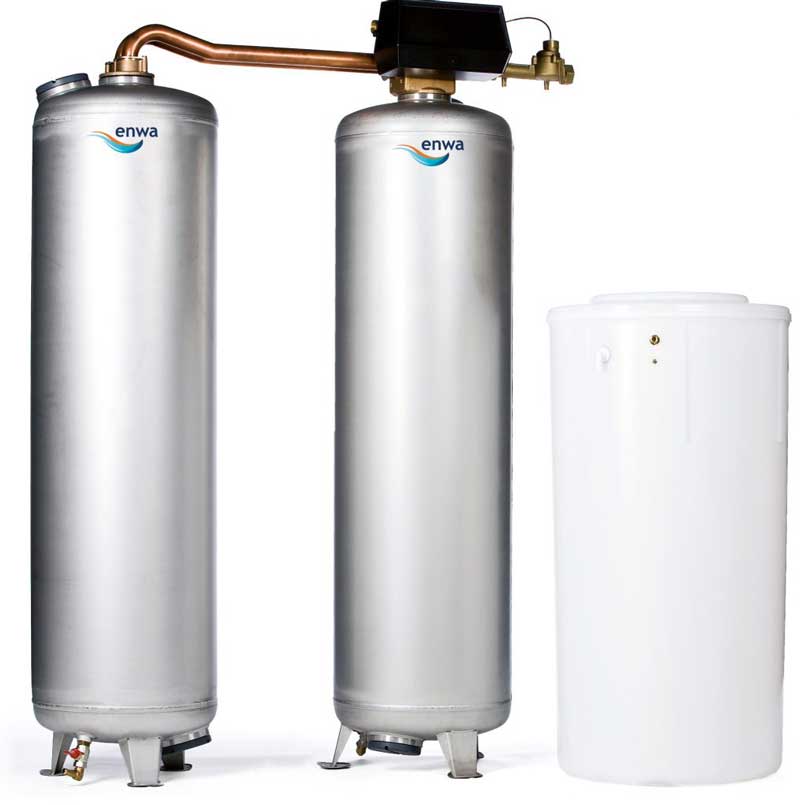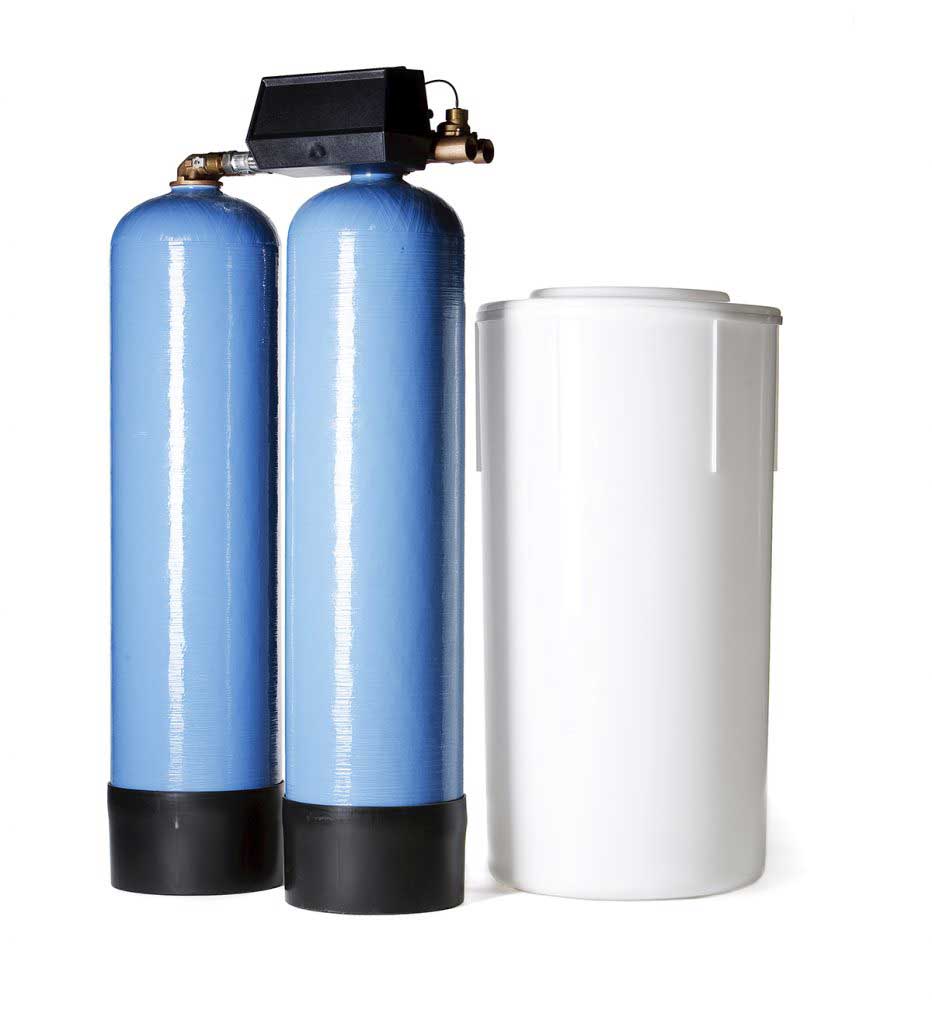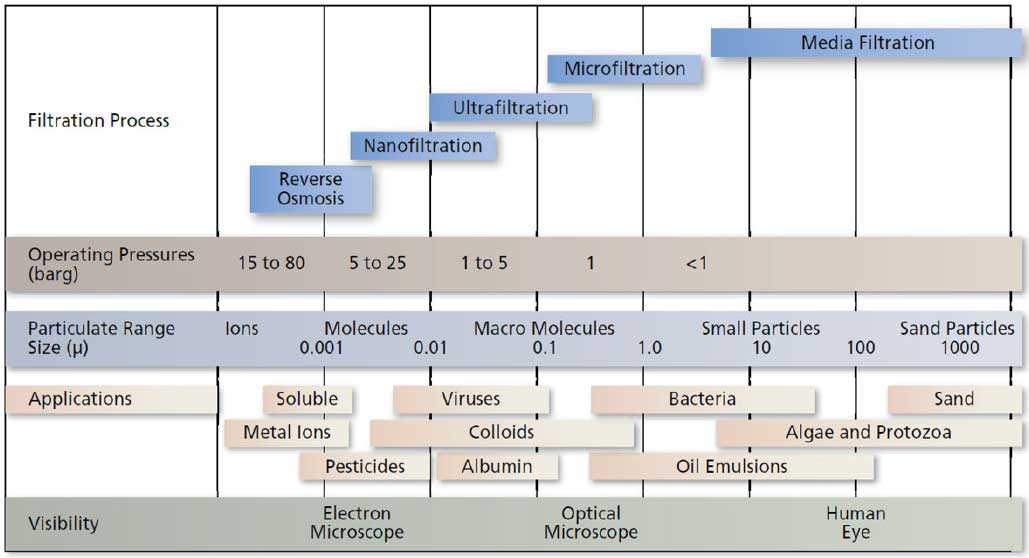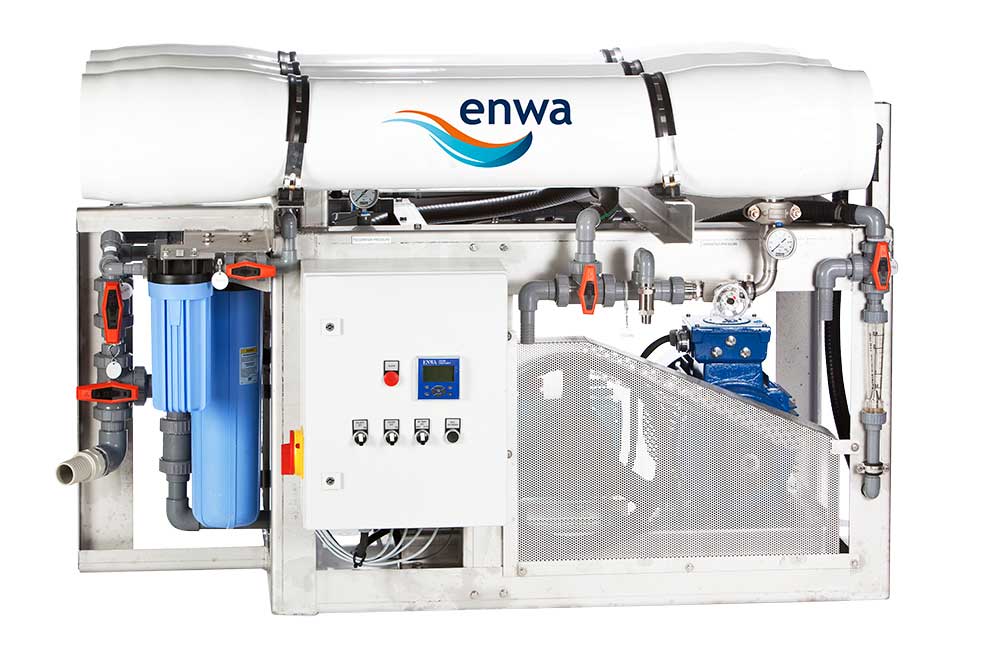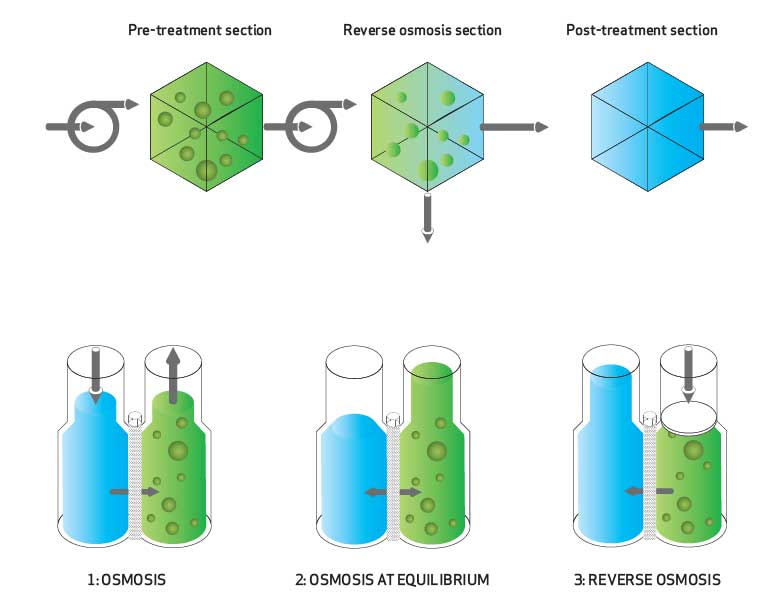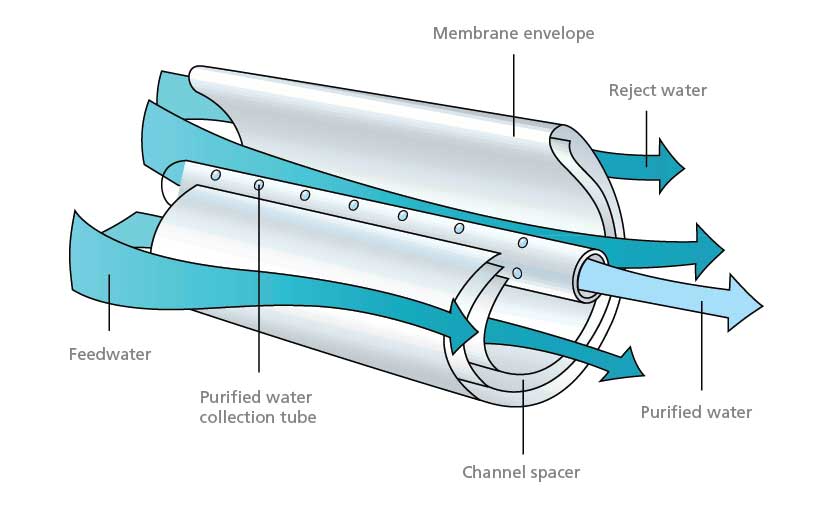What is reverse osmosis?
The word osmosis is Greek and means ‘pressure shock’ and it is the ability of liquids and solutes to penetrate a semi permeable membrane. Osmosis takes place when two solutions of different concentration are on each side of a membrane. The more concentrated solution always draws the water from the weaker one until the same concentration is reached on both sides of the membrane.
Osmosis is used to separate different substances and with the help of technology this process can be reversed. By increasing the pressure of the “contaminated” liquid, the water is forced through our synthetic, semi-permeable membranes, separating the smallest particles (molecules and ions) from the pure water molecules.
A major advantage of reverse osmosis water filters is that no chemicals are added during the ‘Purification’ process. The membranes are mounted in a pressure vessel called a ‘Module’.
Before water is desalinated within the membranes, it must be free of chlorine, iron, aluminium, silicic acid, particles, organic and biological contaminants, etc etc. It is therefore, vitally important for the raw water to be ‘Pre-treated’ before it passes through the reverse osmosis system.
The pre-treatment is intended to reduce particles and contaminants that would otherwise damage the membranes, clog the pipelines, or damage the high-pressure pump.
How does reverse osmosis work?
A raw water pump is required to raise the raw water pressure before it enters the filter. The water is then passed through a pre-filter (which removes smaller particles) and then through a high-pressure pump. This increases the pressure of the raw water so that it exceeds the ‘osmotic pressure’, before the water is desalinated in the membranes.
It is important that the water has the right working pressure. Otherwise, the pump may stop working. There is therefore a pressure switch in front of the pump which stops the system automatically if the pressure is too low.
After the RO module, the water is discharged into two streams, desalinated and salt concentrate water (Brine). The brine continues directly to the drain. The purified water passes through a cell that measures the conductivity and if this is too high, the water automatically drains through a 3-way solenoid valve.

